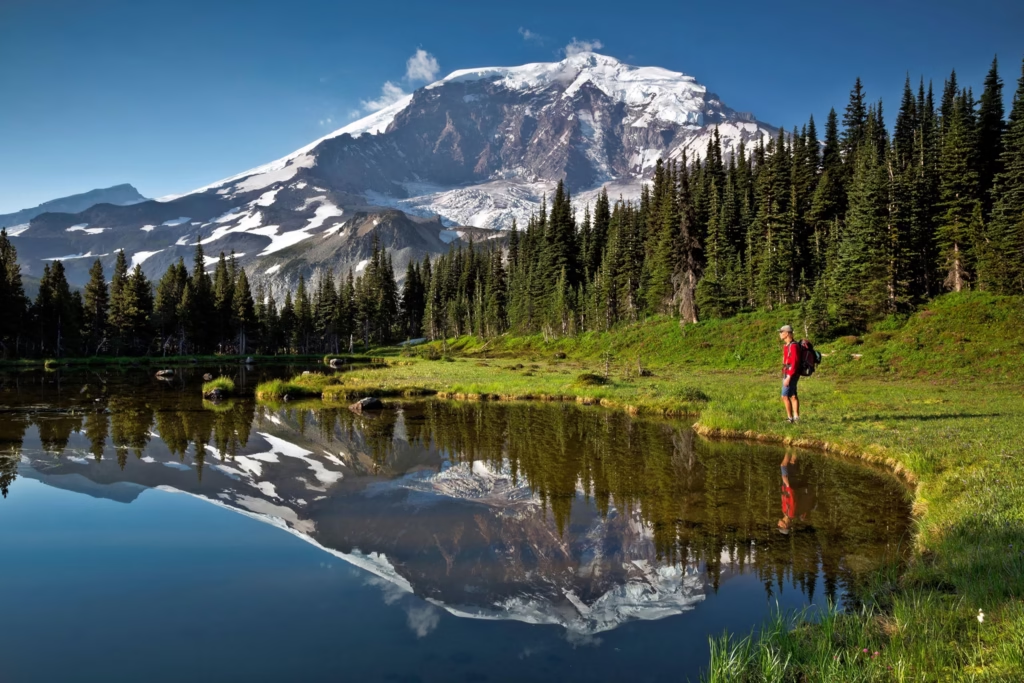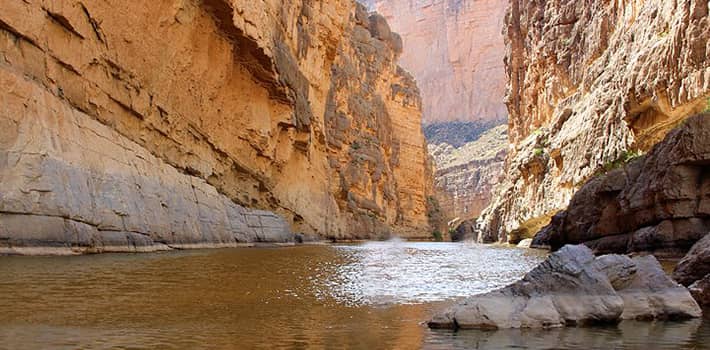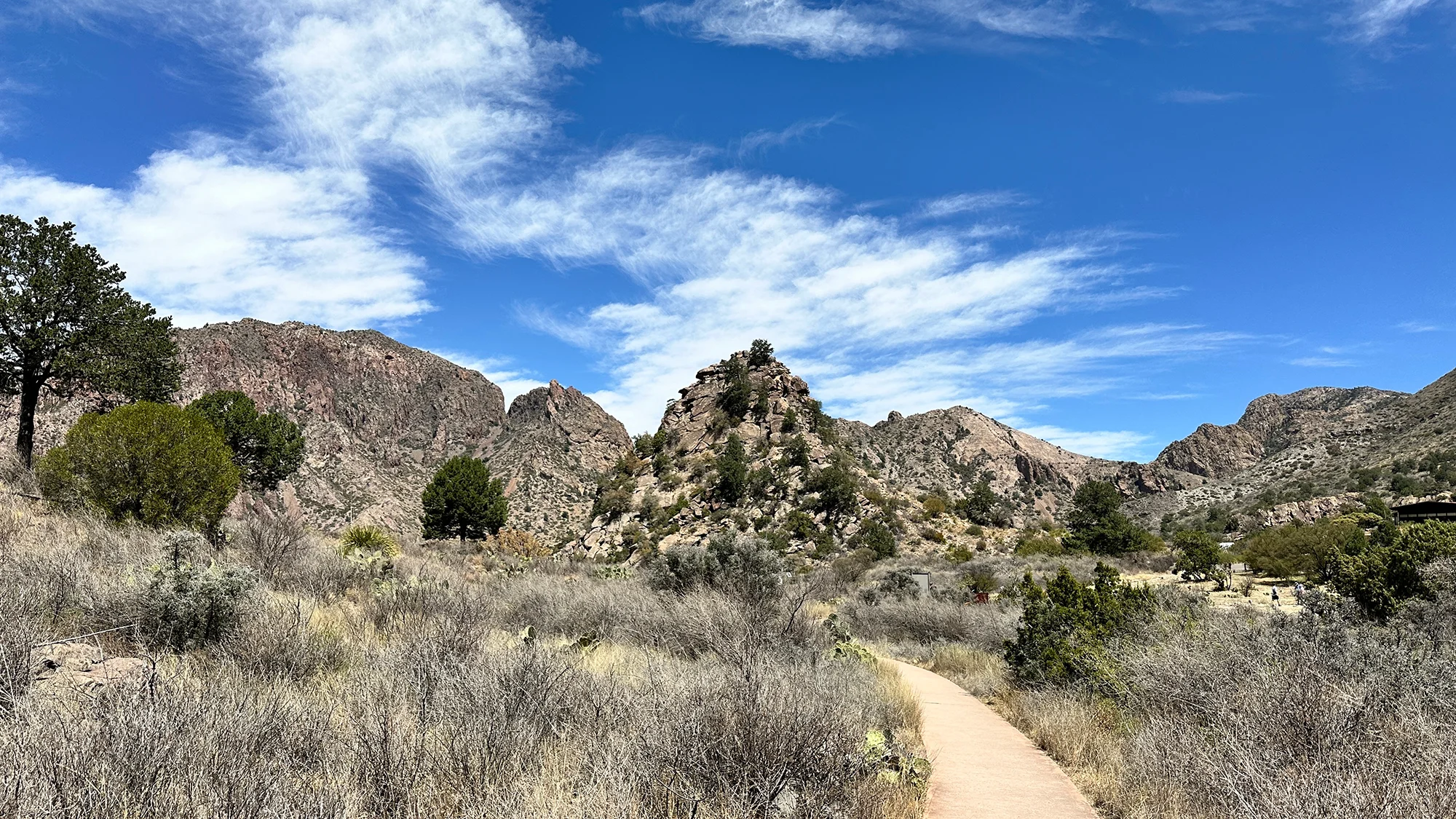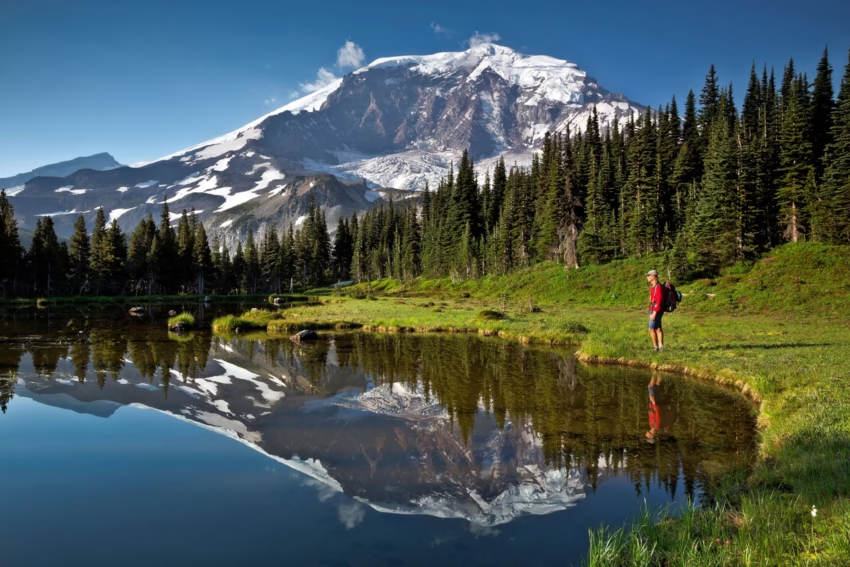
Discover the Wonders of Big Bend National Park

The Chihuahuan Desert is a living, breathing ecosystem, covered with a diverse range of plants such as bunchgrasses, creosote bushes, cacti, lechuguillas, yuccas, and sotols. But venture to the Rio Grande, and it feels like you’ve stepped into an entirely different world. The lush floodplains and steep, narrow canyons along the river create a serene oasis in the heart of the desert. Just beyond, the Chisos Mountains rise dramatically, offering a refreshing change in climate—temperatures here can be up to 20 degrees cooler than the desert below. Pine, juniper, and oak trees thrive in these cooler heights, and the mountains are home to wildlife like deer, mountain lions, and bears. When heavy rain hits, the desert comes alive—dry creek beds transform into rushing streams, and long-dormant seeds burst into vibrant fields of wildflowers.
The Geologic Story of Big Bend

The rocks of Big Bend National Park have an incredible tale to tell. Millions of years ago, two seas flowed across the region, leaving behind thick layers of limestone and shale. The mountains we see today (excluding the Chisos) began rising about 75 million years ago, alongside the Rocky Mountains. During this same time, a massive 40-mile-wide trough sank along fault lines, giving rise to the dramatic Santa Elena Canyon to the west and the Sierra del Carmen to the east, both towering over 1,500 feet above the desert floor. Volcanic activity also shaped the landscape, filling the sky with ash and pushing molten rock from beneath the Earth’s surface to form the Chisos Mountains around 35 million years ago. Some of this molten rock cooled underground, only to be revealed through erosion over time.
Big Bend’s Rich Biodiversity

With its diverse landscapes and geologic history, Big Bend is a haven for wildlife. The park is home to 1,200 plant species, many of which are found nowhere else on Earth. From cacti to wildflowers, the area is a biodiversity hotspot, supporting an incredible range of life that has adapted to this unique environment.
A Rich History of Human Presence

Humans have been passing through the Big Bend region for over 10,000 years, leaving behind traces of their presence. Over the centuries, the park has seen a variety of people and cultures, including the Apache, Spanish conquistadors, Comanche, U.S. soldiers, miners, ranchers, farmers, Mexican revolutionaries, and even outlaws and bandits. This history has shaped the land and the stories that are still told today.
Did You Know?
Big Bend is home to at least 450 bird species, making it the most bird-rich national park in the U.S.
Discover the Wonders of Big Bend National Park

The Chihuahuan Desert is a living, breathing ecosystem, covered with a diverse range of plants such as bunchgrasses, creosote bushes, cacti, lechuguillas, yuccas, and sotols. But venture to the Rio Grande, and it feels like you’ve stepped into an entirely different world. The lush floodplains and steep, narrow canyons along the river create a serene oasis in the heart of the desert. Just beyond, the Chisos Mountains rise dramatically, offering a refreshing change in climate—temperatures here can be up to 20 degrees cooler than the desert below. Pine, juniper, and oak trees thrive in these cooler heights, and the mountains are home to wildlife like deer, mountain lions, and bears. When heavy rain hits, the desert comes alive—dry creek beds transform into rushing streams, and long-dormant seeds burst into vibrant fields of wildflowers.
The Geologic Story of Big Bend

The rocks of Big Bend National Park have an incredible tale to tell. Millions of years ago, two seas flowed across the region, leaving behind thick layers of limestone and shale. The mountains we see today (excluding the Chisos) began rising about 75 million years ago, alongside the Rocky Mountains. During this same time, a massive 40-mile-wide trough sank along fault lines, giving rise to the dramatic Santa Elena Canyon to the west and the Sierra del Carmen to the east, both towering over 1,500 feet above the desert floor. Volcanic activity also shaped the landscape, filling the sky with ash and pushing molten rock from beneath the Earth’s surface to form the Chisos Mountains around 35 million years ago. Some of this molten rock cooled underground, only to be revealed through erosion over time.
Big Bend’s Rich Biodiversity

With its diverse landscapes and geologic history, Big Bend is a haven for wildlife. The park is home to 1,200 plant species, many of which are found nowhere else on Earth. From cacti to wildflowers, the area is a biodiversity hotspot, supporting an incredible range of life that has adapted to this unique environment.
A Rich History of Human Presence

Humans have been passing through the Big Bend region for over 10,000 years, leaving behind traces of their presence. Over the centuries, the park has seen a variety of people and cultures, including the Apache, Spanish conquistadors, Comanche, U.S. soldiers, miners, ranchers, farmers, Mexican revolutionaries, and even outlaws and bandits. This history has shaped the land and the stories that are still told today.
Did You Know?
Big Bend is home to at least 450 bird species, making it the most bird-rich national park in the U.S.
FAQs
1. What makes Big Bend National Park unique?
Big Bend is known for its stunning combination of desert, river, and mountainous landscapes, offering a wide range of ecosystems in a single park. It’s home to 1,200 plant species—many of which can’t be found anywhere else—plus an abundance of wildlife, including over 450 bird species.
2. How did Big Bend’s landscape form?
The park’s mountains and canyons were shaped over millions of years by seas that once covered the area, volcanic activity, and erosion. The Santa Elena Canyon and Sierra del Carmen are some of the most striking features of the park, formed through faulting and volcanic activity.
3. What wildlife can be found in Big Bend?
Big Bend is home to a diverse array of wildlife, including mule deer, mountain lions, bears, and numerous bird species. The park’s varied habitats, from the desert to the mountains, support this rich biodiversity.
4. How long have humans been in the Big Bend area?
Humans have been present in the region for at least 10,000 years, with evidence of Apache, Spanish, and Comanche presence, among others. The park has a long history of cultural significance.
5. What makes Big Bend a great place for birdwatching?
Big Bend is a birdwatcher’s paradise with 450 species of birds recorded in the park. Its diverse ecosystems provide the perfect habitat for both migratory and resident birds, making it the bird species leader among U.S. national parks.
6. When is the best time to visit Big Bend?
The best time to visit Big Bend is during the cooler months, from October to April. The desert heat can be intense in the summer, but the cooler weather during these months makes for perfect hiking, camping, and stargazing conditions.
Conclusion
Big Bend National Park is a place where dramatic landscapes, fascinating history, and incredible biodiversity come together in one of the most unique national parks in the U.S. From the Chihuahuan Desert to the cool peaks of the Chisos Mountains, it offers a wide variety of ecosystems that support life found nowhere else on Earth. Whether you’re exploring its geologic wonders, birdwatching, or learning about the cultures that have shaped its history, Big Bend offers an unforgettable experience. The park’s peaceful solitude and stunning beauty make it a must-visit destination for nature lovers, history buffs, and adventurers alike.
